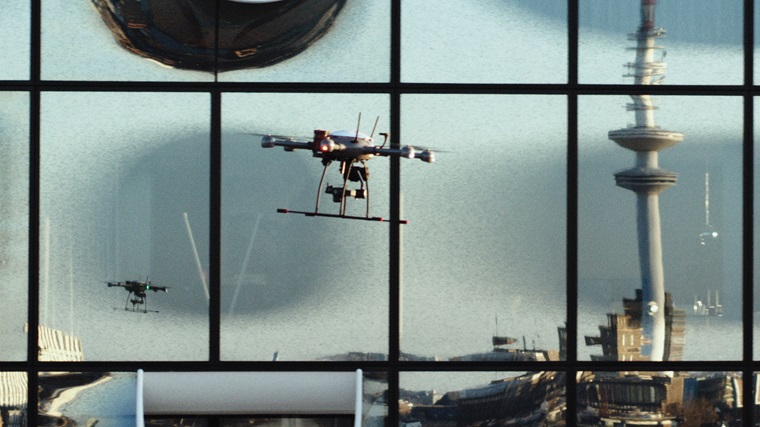How Sony Europe Enhances Drone Utility in Construction
According to the 2024 Commercial UAV News sector snapshot, the use of drones within the construction industry has surged by an impressive 239% in recent years. Drones facilitate numerous benefits, such as enhanced land mapping, precise aerial imaging, decreased employee hazards, improved data collection, and reduced project timelines. Consequently, there’s a strong belief that construction firms will increasingly adopt drone technology as these devices become integral tools driving sector growth.
Leading the charge in this evolution is Sony Europe, whose advanced cameras and sensing technologies are widely utilized by construction professionals. A notable example comes from German company HHLA Sky, which partnered with Sony to perform essential crane safety inspections at the Port of Hamburg. By integrating Sony’s Alpha 7R cameras and the Sony Camera Remote SDK with automated drones, HHLA Sky managed to enhance inspection efficiency and the quality of asset imagery. This collaboration also significantly improved overall job site safety.
To delve deeper into how Sony’s innovations contribute to the construction arena, Commercial UAV News reached out to Matthew Swinney, Head of Image Sensing Solutions Europe at Sony Europe B.V. Our discussion centered on the nuances of Sony’s digital imaging products, optimal integration strategies, and future prospects for uncrewed systems in construction.
Improving Efficiency and Safety with Drone Technology
Commercial UAV News: In your experience, how do drones enhance efficiency, accuracy, and safety in construction?
Swinney: While Sony Europe isn’t directly involved in managing construction sites, we’ve developed a comprehensive portfolio of camera and sensing technologies specifically for drone inspections. The construction sector is a crucial market for many of our clients.
Previously, safety inspections required extensive resources, including technicians, scaffolding, and heavy machinery. These processes could be disruptive, inefficient, and perilous, as workers were often required to scale high and potentially dangerous structures. The introduction of drones has mitigated these risks. Inspections can now be executed from the ground with a drone pilot, leading to heightened safety, efficiency, and accuracy. Drones equipped with cutting-edge cameras and sensors are adept at navigating hard-to-reach areas, offering extensive coverage of construction sites.
Harnessing Data for Superior Project Insights
Commercial UAV News: What advantages are there to collecting data on construction projects with drones?
Swinney: The potential to gather substantial amounts of data during construction projects using drones is invaluable. With advancements in AI and the increasing availability of images, flight logs, and 3D models, this capability will only expand. As machine learning enhances the AI employed by drones, the future of drone-based imagery looks promising.
Navigating the Challenges of Drone Integration
Commercial UAV News: Given that construction is an established industry, has it been challenging to incorporate drones? Are seasoned construction professionals hesitant to embrace uncrewed technologies?
Swinney: Indeed, integrating drones into traditional construction settings poses challenges due to entrenched processes and established workflows. The construction industry must also navigate various regulations regarding drone operations, such as airspace restrictions and safety guidelines. Fortunately, several skilled drone service providers are available to assist with regulatory compliance.
While construction professionals are generally open to innovative techniques, their reliance on proven methods, rooted in experience, is understandable. However, the benefits of drone technology are evident, with numerous instances showcasing its significant value within the construction sector. Over time, the advantages provided by drone technology will become increasingly apparent, establishing it as a vital component of the industry.
Future Trends in Drone Application
Commercial UAV News: What developments in drone technology do you foresee impacting the construction sector? Apart from machine learning and AI, what other advancements should professionals keep in mind?
Swinney: The integration of AI and machine learning will revolutionize drone-based image capture capabilities, providing exceptional value to the construction industry. With AI, drones can detect minute details like cracks and wear that might be missed by the human eye from a distance. Additionally, AI can optimize drone flight paths and enhance their collision avoidance abilities, improving safety and equipment protection in confined spaces typical on construction sites. Increased drone usage means more data collection, empowering AI to evolve further. In summary, the future holds great promise for AI in construction, presenting significant opportunities for professionals to tap into groundbreaking developments that could transform many aspects of their operations.

.jpg.small.400x400.jpg)













